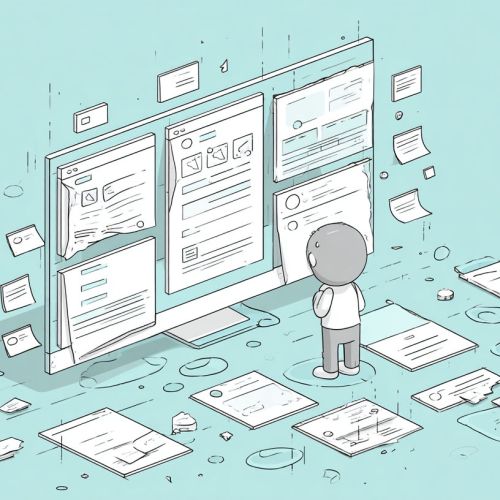Imagine a marketing leader debating whether to invest heavily in snappy social blurbs or comprehensive pillar articles to fuel brand growth. This decision sits at the heart of content strategy debates worldwide. The core question of short vs long-form content frames that dilemma perfectly. With ever-shrinking attention spans, does short content win engagement through immediacy, or do in-depth pieces deliver higher long-term ROI by establishing authority?
This question matters far beyond content teams. The right balance shapes brand authority, influences SEO performance, and directly impacts audience engagement—key drivers of sustainable growth in any digital marketing ecosystem. Choosing incorrectly can mean chasing fleeting clicks or missing out on building lasting customer trust.
This definitive guide will provide a nuanced understanding of both content types. It will explore when and why each excels while offering actionable frameworks that help marketing leaders align content forms with their specific business goals. Whether you lead a B2B SaaS company, oversee a digital agency, or are a CMO aspiring to define an adaptive content mix, this article will deepen your strategic insights on the short vs long-form content equation.
Content Length Demystified: Defining Short vs Long-Form
Before diving into strategic comparisons, clarity about what constitutes short vs long-form is vital. Definitions have evolved in digital marketing, influenced by user behavior, platform shifts, and content formats.
Standard Definitions and Formats
Short-form content typically describes pieces under 1,000 words. This includes tweets, LinkedIn posts, Instagram stories, TikTok videos under a minute, infographics, and quick-read blog posts. The focus is on brevity and immediacy—communicating value quickly for audiences on-the-go.
Long-form content generally spans 1,500 to 2,500+ words. Common formats include comprehensive blog posts, ebooks, whitepapers, detailed guides, case studies, and pillar content designed to cover subjects exhaustively. The aim is depth, education, and nurturing prospects through the buyer journey.
User Intent and Device Influence
User intent significantly influences which content length resonates best. Someone in an awareness stage online might prefer quick, shareable insights, while someone in consideration or decision stages seeks detailed answers to complex questions.
Moreover, device use shapes consumption preferences. Studies show mobile users often skim or seek shorter content due to environment and attention constraints, whereas desktop users engage longer when researching solutions deeply.
Myths Versus Reality: Attention Spans and Engagement
A common myth is that attention spans have collapsed so dramatically that no one reads beyond headlines anymore. Research from Chartbeat counters this, showing that once a user commits to a page, engagement depth varies widely, often linked to content relevance and quality rather than mere length.
According to Nielsen data, users scan only 20% to 28% of page content on average, but longer articles that demonstrate clear structure and scannability keep readers engaged longer. HubSpot reports that the average dwell time for short-form is roughly 1.5 minutes, whereas long-form can command up to 4-5 minutes or more depending on topic relevance.
Summary
Understanding these standards and evolving behaviors forms the foundation for realistic comparisons later. Recognizing that ‘short’ and ‘long’ are relative and context-dependent helps marketers tailor content to their unique audiences and goals.
The Power of Short-Form Content: Speed, Shareability, and Reach
Short-form content wields undeniable power in today’s fast-paced digital climate. Its hallmark traits are speed to consume, viral potential, and reach—especially on social platforms optimized for brevity.
Fast Consumption for Busy Audiences
In a world dominated by mobile-first content consumption, audiences crave digestible content they can absorb quickly between meetings or commutes. Short-form content fits this behavior perfectly, providing snackable insights or entertainment in seconds.
For LinkedIn in particular, LinkedIn post length best practices emphasize concise messaging—posts between 25 and 50 words tend to outperform longer updates in engagement rate, especially when combined with striking visuals or emotive storytelling.
Virality and Engagement Mechanics
Platforms like TikTok, Instagram Reels, and Twitter thrive on algorithms that reward snackable, shareable content capable of rapid replication. Duolingo’s TikTok presence demonstrates this brilliantly. Their short videos highlight brand personality while achieving millions of views and shares, driving awareness at scale.
According to Statista, 64% of users share short-form videos, illustrating their viral potential. This rapid spread builds social proof and brand recall in ways long-form struggles to match quickly.
Brand Personality and Rapid Recognition
Short content acts as a megaphone for brand voice—witty, timely, or empathetic bursts that carve distinct brand identities. Wendy’s Twitter feed is a notable example, employing biting humor and quick replies that create memorable brand personality and customer engagement.
Platform Optimization
Social algorithms are increasingly optimized to deliver engaging short content for immediate audience gratification. X (formerly Twitter) and Meta platforms favor posts and ads that catch attention swiftly, boosting impressions and interactions with fewer barriers to entry.
Example
HubSpot’s internal data shows short-form content, including microblogs and social snippets, contributes heavily to brand visibility and share traffic, although longer content underpins organic search success.
The Impact of Long-Form Content: Authority, Depth, and SEO
While short-form excels at outreach and viral buzz, long-form content remains the cornerstone of authoritative marketing. Its capacity for depth, data richness, and SEO benefits provides enduring value.
In-Depth Coverage Establishes Expertise
Long-form content allows marketers to build thought leadership and detailed problem-solving resources. This nurtures trust and positions brands as go-to experts.
For example, B2B marketing leaders rely on whitepapers and comprehensive guides during consideration and decision stages, where depth trumps brevity. HubSpot’s extensive academy articles exemplify how education-based long-form content enhances user knowledge over time.
Keyword Depth and SEO Correlation
Studies, including those from Backlinko and SEMrush, reveal a strong correlation between content length and first-page ranking. Backlinko’s analysis of 11.8 million Google search results found the average content length for top-ranking pages was approximately 1,447 words.
Long-form content naturally accommodates more keywords, latent semantic indexing (LSI) terms, and subtopics, thereby increasing topical authority. This translates to improved organic visibility and higher quality backlinks.
Conversion and Sales Enablement
Beyond attracting traffic, long-form formats function as essential sales enablement tools. Guides, case studies, and ebooks provide prospects the comprehensive information needed to make buying decisions, supporting conversion optimization.
Link-Building and Evergreen Value
Well-crafted long-form content often becomes cornerstone or evergreen assets that attract sustained backlinks and traffic over months or years. Moz’s Whiteboard Friday sessions and extensive guides are prime examples of content that consistently draws visitors and reinforces domain authority.
Content strategist Aleyda Solis emphasizes: “Long-form content positions you as a credible, trusted source, significantly impacting organic search and lead generation.”
Audience Behavior and Content Consumption Patterns
Understanding how different audiences interact with short vs long-form content unlocks better alignment and avoids missed opportunities.
Demographics and Psychographics
Millennial and Gen Z users often prefer quick, engaging content on social media channels, while older demographics may value detailed, research-rich content. B2B buyers especially seek long-form content during research phases.
B2B content length comparison research from Content Marketing Institute shows that decision-makers favor longer assets such as case studies or whitepapers closer to purchase.
Device Preferences: Mobile vs Desktop
Mobile devices encourage consumption of shorter, scannable content due to screen size and on-the-go behavior. Desktop users, with more screen real estate and focused contexts, engage better with lengthier, in-depth content.
Engagement Metrics
Analyzing metrics like time on page, bounce rates, social shares, and content completion rates helps decode which content length resonates best. Typically, long-form sees higher dwell time but may have higher bounce if irrelevant. Short-form content generates more social shares but lower site retention.
Practical Framework: Content Length by Customer Journey Stage
- Awareness: Short-form content performs best here, capturing interest quickly through social posts, video snippets, and infographics.
- Consideration: Mid-length or long-form content like blogs, ebooks, and podcasts help nurture and educate prospects.
- Decision: Detailed guides, case studies, and whitepapers support the final push toward conversion.
This model aligns with LinkedIn post length best practices and optimal word count for LinkedIn articles where awareness posts are punchy and educational articles detailed.
Crafting Your Optimal Content Mix: Strategy, Testing, and Measurement
Balancing short vs long-form content demands a strategic, data-informed approach. There is no one-size-fits-all formula.
Audit Your Existing Digital Ecosystem
Begin with a content audit to identify current strengths and gaps in format, coverage, and performance. Tools like SEMrush and Google Analytics provide insights into what content attracts and engages.
Strategic Alignment: KPIs for Content Length
Define KPIs aligned with specific goals:
- Short-form: Brand awareness, social engagement, impressions
- Long-form: Organic traffic, lead generation, conversion rates, backlink acquisition
B2B marketers benefit from tracking how different content lengths influence pipeline metrics, aligning with B2B content length comparison insights.
Experimentation and Iteration
Employ A/B testing and collect audience feedback to fine-tune message length and style. Use analytics to monitor engagement patterns continuously, adjusting according to seasonal trends or product lifecycle.
Case Studies
HubSpot masterfully blends short videos and social snippets with comprehensive blog posts and academy courses to create full-funnel engagement. Moz combines quick Whiteboard Friday videos with in-depth SEO research guides, capturing varied audience preferences.
As CMO of a top SaaS company, Rachel Smith stated: “Our adaptive content mix strategy relies on continuous testing. We let data tell us when to double down on short bursts or invest in long-form deep dives.”
Common Pitfalls and Best Practices for Both Content Types
Understanding pitfalls helps avoid wasteful effort and maximizes ROI regardless of content length.
For Short-Form Content
Avoid clickbait that delivers little value; it erodes trust.
Pack value into brevity with clear calls to action and emotional hooks.
Use strong visuals, gifs, and multimedia to compensate for limited text.
For Long-Form Content
Prevent ‘TL;DR’ syndrome by ensuring scannability—use headings, bullet points, and visuals.
Employ storytelling and data to hold interest across lengthier formats.
Ensure mobile responsiveness and fast load speeds to retain readers.
Repurposing Strategies
Convert long-form content into micro-content such as social posts, email snippets, and videos to extend reach, or expand short-form ideas into detailed resources.
Measurement and Iteration
Regularly review performance data and refine accordingly. Industry experts Neil Patel and Ann Handley emphasize the importance of consistent evaluation, cautioning against stagnation.
Conclusion
The debate of short vs long-form content is not about choosing sides but mastering balance. Short-form content excels at speed, shareability, and capturing fleeting attention, making it ideal for awareness-building and social engagement. Long-form content offers depth, authoritative SEO benefits, and nurtures deeper connections, critical for generating qualified leads and sustainable growth.
Forward-looking marketing leaders will blend these forms intelligently, guided by audience insights, platform nuances, and business objectives. AI-driven personalization and interactive content promise to further evolve optimal content lengths as algorithms refine relevance and engagement dynamics.
As you audit your recent campaigns, consider which content lengths delivered your best outcomes and where gaps remain. What balance between quick bites and deep dives best fuels your brand’s long-term success? We invite you to share your experiences and continue this strategic conversation.
Are you ready to rethink your content strategy with this new understanding of short vs long-form content? How will you test and measure your optimal mix in the months ahead?






